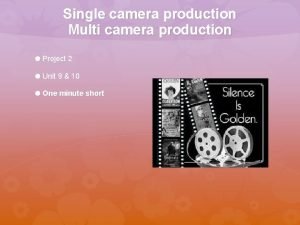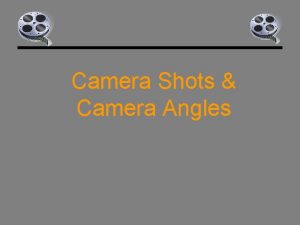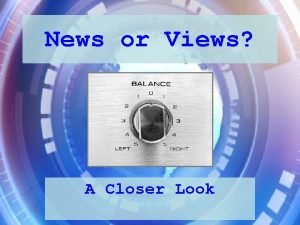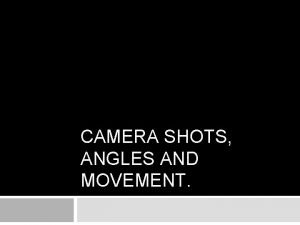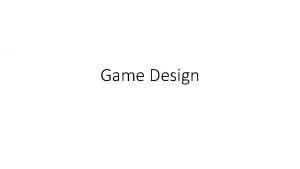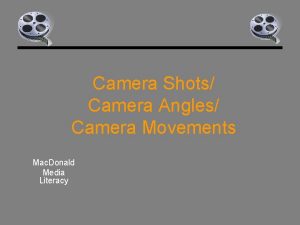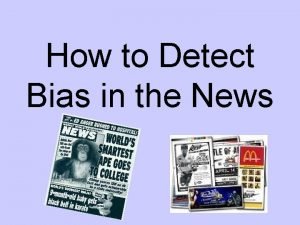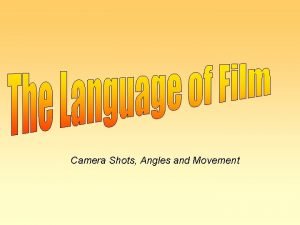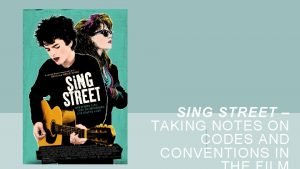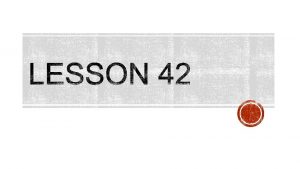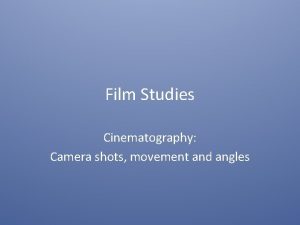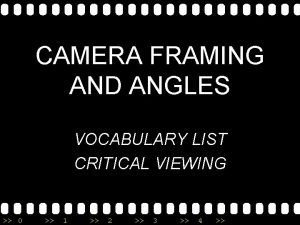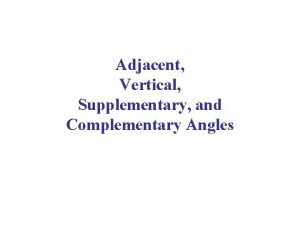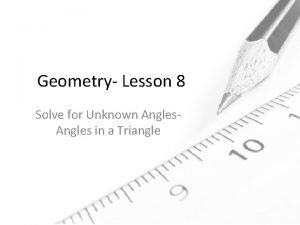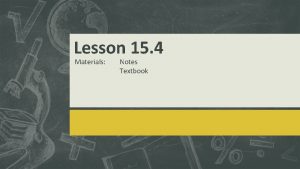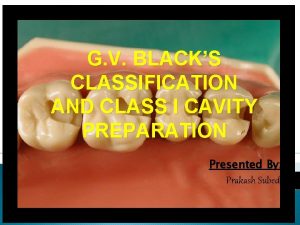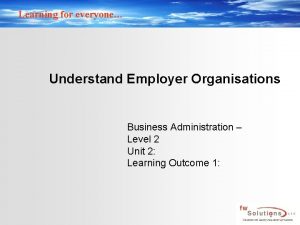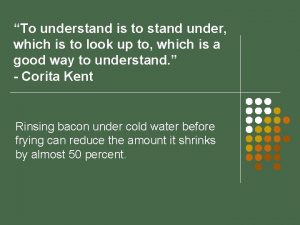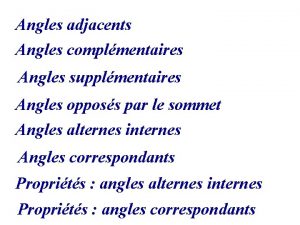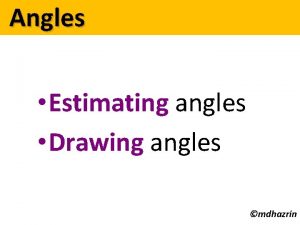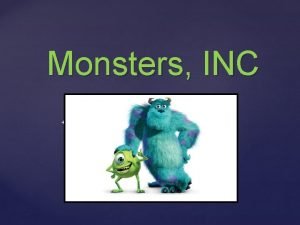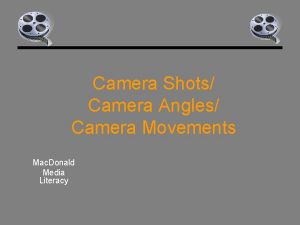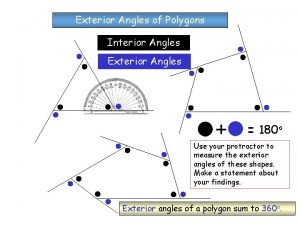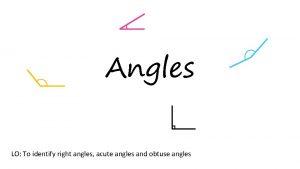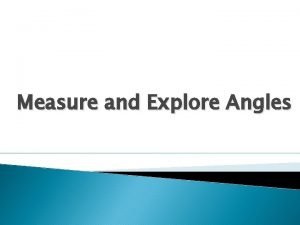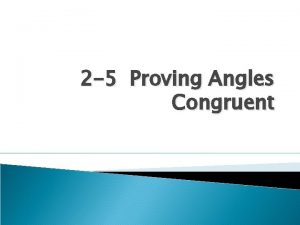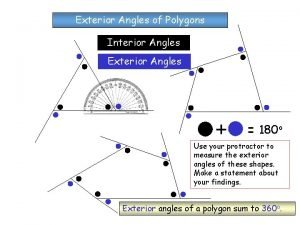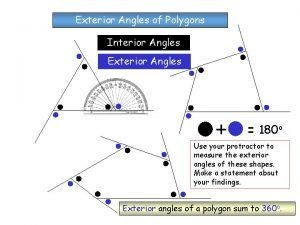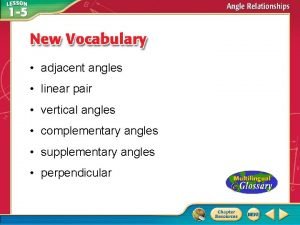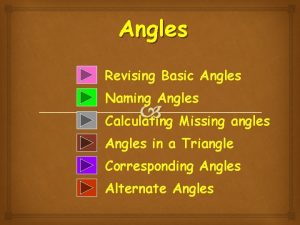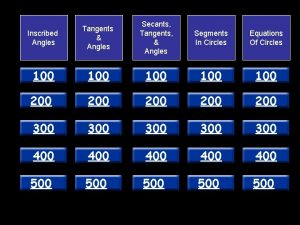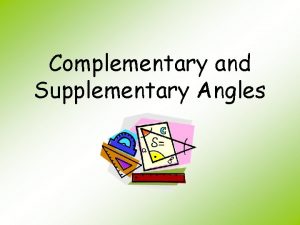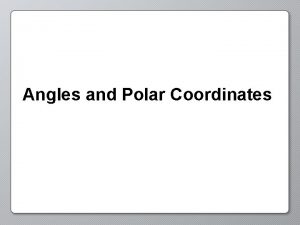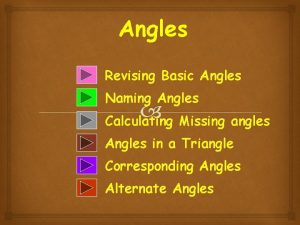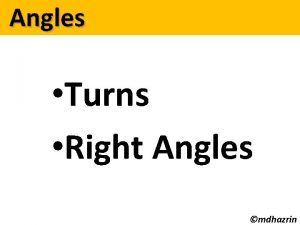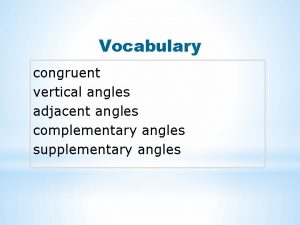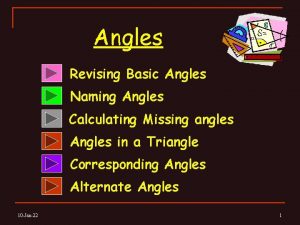Camera angles To understand camera angles in preparation
























- Slides: 24

Camera angles • To understand camera angles in preparation for the coursework

Establishing shot • This can be taken from as much as a quarter of a mile away, and is generally used as a scene-setting, establishing shot.

Long Shot • Generally one which shows the image as approximately "life" size • The figure of a man would appear as six feet tall to the audience • This would show the entire body, with the head near the top of the frame and the feet near the bottom. • While the focus is on characters, plenty of background detail still emerges and this can put the characters in context.

Long shot

Medium long shot • This shot allows the spectator to see the audience in context • Characters seen in relation to other characters and significant objects • Good for moving action shots

Medium Shot • Contains a figure from the waist up and is normally used for dialogue scenes, or to show some detail of action. • Variations on this include the TWO SHOT (containing two figures from the waist up) and the THREE SHOT (contains 3 figures. . . ) • Any more than three figures and the shot tends to become a long shot. • Background detail is minimal, probably because location has been established earlier in the scene - the audience already know where they are and now want to focus on dialogue and character


Close-Up • This shows very little background, and concentrates on either a face, or a specific detail of mise en scène. • Everything else may be just a blur in the background. This shot magnifies the object (think of how big it looks on a cinema screen) and shows the importance of things, be it words written on paper, or the expression on someone's face. • The close-up takes us into the mind of a character. • In reality, we only let people that we really trust get that close to our face - mothers, children and lovers, usually so a close up of a face is a very intimate shot. • A film-maker may use this to make us feel extra comfortable or extremely uncomfortable about a character,

Close up

Extreme Close-Up • As its name suggests, an extreme version of the close up, generally magnifying beyond what the human eye would experience in reality. An extreme close-up of a face, for instance, would show only the mouth or eyes, with no background detail whatsoever. This is a very artificial shot, and can be used for dramatic effect.

The Bird's-Eye view • This shows a scene from directly overhead, a very unnatural and strange angle. Familiar objects viewed from this angle might seem totally unrecognisable at first • This shot does, however, put the audience in a godlike position, looking down on the action. People can be made to look insignificant, antlike, part of a wider scheme of things

Very High Angle • The camera is elevated above the action using a crane to give a general overview. • High angles make the object photographed seem smaller, and less significant (or scary). • The object or character often gets swallowed up by their setting - they become part of a wider picture. • There could be a sense of surveillance • The horizon line will be very high and at the top of the frame

High angle • Used to gain an unusual perspective on the character and their actions • Could should the insignificance of a character or their weakness • The horizon line is high in the frame

Eye Level • A fairly neutral shot; the camera is positioned as though it is a human actually observing a scene, so that eg actors' heads are on a level with the focus. • Allows empathy and understanding of character • The camera will be placed approximately five to six feet from the ground. (the horizon line is about one half to two thirds up the frame)

Low Angle • Low angles help give a sense of confusion to a viewer, of powerlessness within the action of a scene. • The background of a low angle shot will tend to be just sky or ceiling, the lack of detail about the setting adding to the disorientation of the viewer. The added height of the object may make it inspire fear and insecurity in the viewer, who is psychologically dominated by the figure on the screen.

Canted Angle/shot • The horizon line is deliberately tilted so that nothing in the scene is horizontal or vertical. • Lack of control • suggests imbalance, transition and instability, extreme anxiety

P. O. V • This allows the audience to see things from the characters point of view • This could be to create empathy, fear, understanding etc

Over the shoulder shot • Used in a dialogue sequence and links in with shot reverse shot • It can give more of one characters point of view than a 2 shot

Two shot • A shot with two people in it • Allows audiences to understand relationships between characters through body language and facial expressions • May be linked with a medium close up or 3 shots (three people within the frame)

Frame within a frame • occurs when an element within the story world) frames a character or an object. Frequently used frames include doors, windows, and other architectural elements. Natural frames such as tree branches and foliage are also used.

Horizontal camera angles • • Frontal. The frontal angle tends to flatten the three dimensionality of facial features and environments. • Three-quarter front. The three -quarter front angle is more often used than the frontal angle or profile because it shows more depth and volumes. • Profile. • Three-quarter rear. • Rear.

Vertical camera angles • High angle. The camera is placed above eye level, looking downward. A high angle shot can make a character look smaller, younger, weak, confused, or more childlike. • Eye level. Most commonly used. • Low angle. The camera is placed below eye level, looking upward. A low angle shot can make a character look bigger, stronger, or nobler. It also gives the impression of height.

Your task • Recreate the camera angles discussed in the slide using either your camera. We will be uploading them onto the system

Plenary
 To understand recursion you must understand recursion
To understand recursion you must understand recursion Vertical angles
Vertical angles Multi-camera production
Multi-camera production Single camera vs multi camera
Single camera vs multi camera Camera shots and angles quiz
Camera shots and angles quiz Example of camera shots
Example of camera shots Bias by photos, captions, and camera angles
Bias by photos, captions, and camera angles Camera shots angles and movements
Camera shots angles and movements Game camera angles
Game camera angles Camera shots and angles quiz
Camera shots and angles quiz Bias by photos, captions and camera angles
Bias by photos, captions and camera angles Camera
Camera Sing street camera angles
Sing street camera angles Bias by photos captions and camera angles examples
Bias by photos captions and camera angles examples Cinematography camera angles
Cinematography camera angles List of camera angles
List of camera angles Technical codes.
Technical codes. Are adjacent angles complementary
Are adjacent angles complementary Answers
Answers Module 15 lesson 1 central angles and inscribed angles
Module 15 lesson 1 central angles and inscribed angles Black class 1 cavity
Black class 1 cavity Example of phylogenetic tree
Example of phylogenetic tree Understand employer organisations
Understand employer organisations Adjective of aim
Adjective of aim Understand stand under
Understand stand under



